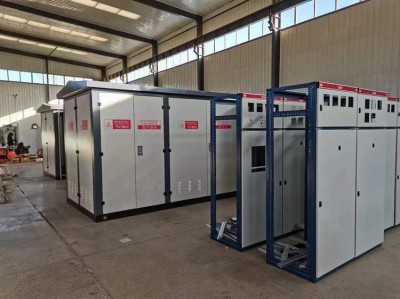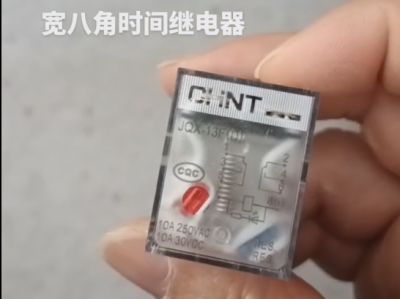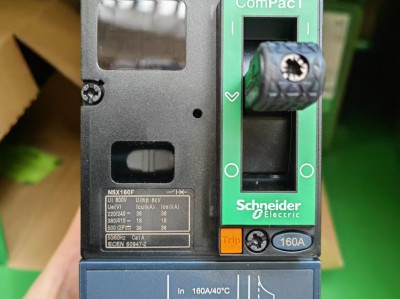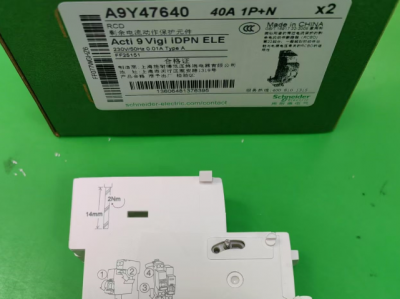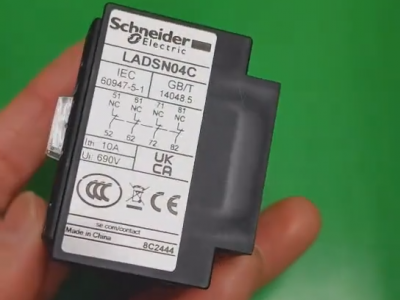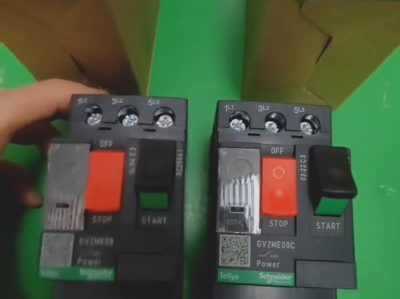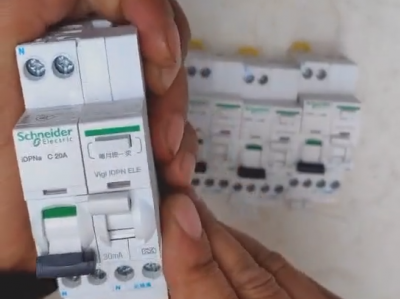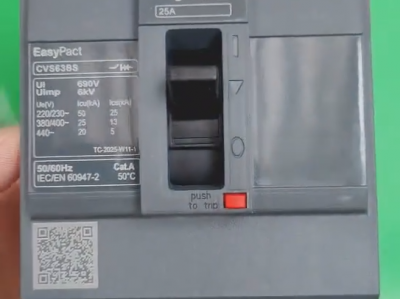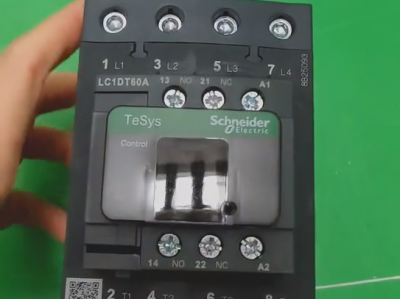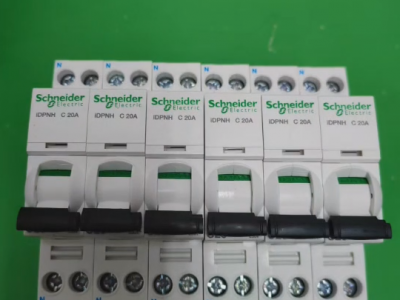CHINT NXM250S-3300/180A molded case circuit breaker
Product description
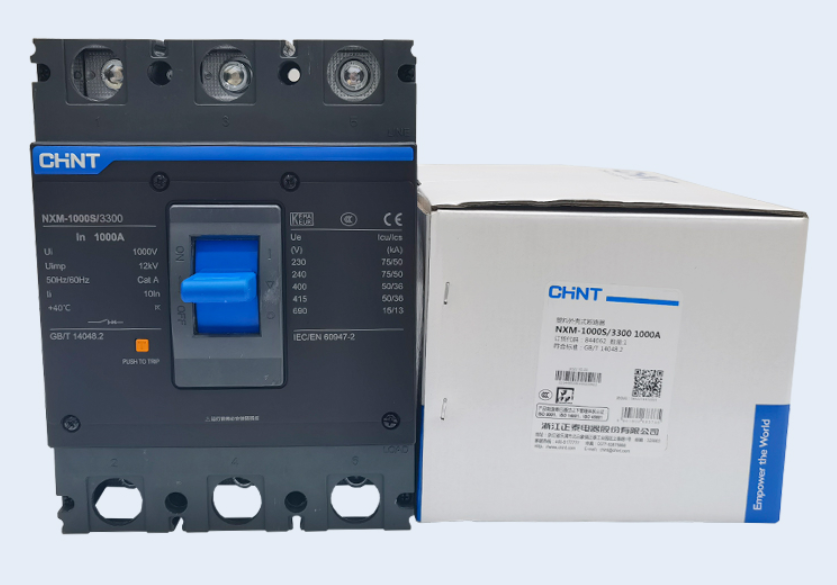
The CHINT NXM250S-3300/180A molded case circuit breaker (MCCB) is a protective device specially designed for low-voltage power distribution systems, suitable for industrial, commercial, and residential applications. The following is a detailed analysis of its technical parameters, application scenarios, selection points, and maintenance suggestions:
I. Core Technical Parameters*Chint NB2LE C20 circuit breaker*
1. **Electrical Performance**
- **Rated Current**: 180A, suitable for medium to high-load circuits (e.g., motors, lighting distribution boxes).
- **Breaking Capacity**:
- **Class S**: Icu (ultimate breaking capacity) = 50kA, Ics (service breaking capacity) = 36kA (72% of Icu), applicable to scenarios where the short-circuit current ≤ 50kA.
- **Short-time withstand current (Icw)**: 30kA (1 second), ensuring stable contact closure during faults.
- **Pole Number**: 3P (three-phase), supporting grounding systems such as TN-C-S.
- **Trip Type**: Thermomagnetic (the second "3" in 3300 represents thermomagnetic tripping), providing overload long-time delay (inverse time) and short-circuit instantaneous protection.
- **Rated Voltage**: AC 400V (up to 690V supported, but the 250A frame is not applicable at 690V).
2. **Mechanical Characteristics**
- **Installation Method**: Fixed type, front-wiring design, compatible with standard 35mm rails.
- **Operation Mode**: Manual closing, supporting remote shunt tripping (accessories need to be selected separately).
- **Dimensions**: Approximately 105mm (W) × 188mm (H) × 85mm (D), compact size to save distribution cabinet space.
3. **Environmental Adaptability**
- **Operating Temperature**: -5°C to +70°C, adaptable to high-temperature environments (e.g., unairconditioned power distribution rooms).
- **Altitude**: ≤2000m, pollution degree 3, suitable for industrial environments.
II. Application Scenarios**
1. **Typical Applications**
- **Power Distribution System**: As a branch circuit switch to protect lines from overload and short-circuit faults (e.g., floor distribution boxes in commercial complexes).
- **Motor Control**: Provides direct starting protection for motors below 150kW (needs to be used with contactors).
- **Renewable Energy**: Protection for the output side of photovoltaic inverters, supporting bidirectional current (reverse power feeding capability needs to be confirmed).
2. **Industry Adaptation**
- **Industry**: Power distribution for factory production lines, pump houses, and other power equipment.
- **Construction**: Control of lighting and air conditioning systems in intelligent buildings.
- **Infrastructure**: Small data centers, hospital emergency power systems.
III. Technical Features and Advantages**
1. **Intelligent Protection Functions**
- **Overload Long-time Delay**: Inverse time characteristics, allowing adjustment of the tripping curve according to load characteristics (e.g., motors require extended tripping time).
- **Short-circuit Instantaneous Protection**: Quickly breaks short-circuit current with a response time <10ms.
- **Undervoltage Protection**: Shunt undervoltage release can be selected (needs to be ordered separately), automatically tripping when the voltage is below 70% of the rated value.
2. **High-reliability Design**
- **Arc-guided Contacts**: Reduces arc energy and extends contact life to 10,000 electrical operations.
- **Vibration-resistant Structure**: Passed IEC 60068-2-6 vibration testing, suitable for industrial scenarios with frequent start-stop operations.
- **Flame-retardant Housing**: Made of PA66+GF30 material, heat-resistant up to 125°C, compliant with UL94 V-0 standards.
3. **Flexible Expandability**
- **Abundant Accessories**: Supports auxiliary contacts (AX/AL-M1), alarm contacts (AX/AL-M3), shunt trip coils, etc., enabling remote monitoring and fault alarm.
- **Phase Spacers**: Arc-shaped arc-dividing plates can be selected to enhance interphase insulation and reduce short-circuit arc risks.
IV. Selection and Installation Suggestions**
1. **Selection Points**
- **Matching Breaking Capacity**: Choose Class S (50kA) or Class H (70kA) based on the system short-circuit current. For example, Class S is usually sufficient when the transformer capacity ≤1600kVA.
- **Trip Unit Type**:
- **Thermomagnetic (3300)**: Suitable for mixed loads (e.g., motors and lighting combined).
- **Electromagnetic (3200)**: Short-circuit protection only, suitable for pure resistive loads.
- **Accessory Selection**:
- Remote control: Shunt trip coil (MX) + auxiliary contact (AX).
- Leakage protection: Need to select the NXMLE series (e.g., NXMLE-250S/3300-180A).
2. **Installation Notes**
- **Wiring Specifications**: Use 240mm² copper cables (need to crimp OT terminals), tighten with a torque of 8N·m to avoid excessive contact resistance.
- **Environmental Conditions**: The installation location should be well-ventilated to prevent dust accumulation (e.g., regular cleaning is required in textile factories).
- **Grounding Requirements**: The metal housing must be reliably grounded with a yellow-green two-color wire, and the grounding resistance ≤4Ω.
V. Maintenance and Fault Handling**
1. **Routine Maintenance**
- **Cleaning and Inspection**: Use dry compressed air to remove internal dust quarterly, and check contact wear (replace if wear exceeds 1mm).
- **Function Testing**: Use a testing box annually to verify tripping characteristics, ensuring that overload protection does not trip within 2 hours at 1.13 times the rated current and trips within 1 hour at 1.45 times.
2. **Common Faults and Solutions**
- **Inability to Close**: Check if the energy storage spring is loose or if the trip unit is in the "re-tripping" position (needs manual reset).
- **False Tripping**: View fault records through the control unit. If it is an instantaneous overcurrent, adjust the short-circuit protection threshold (e.g., increase from 10In to 12In).
- **Contact Overheating**: Check if wiring terminals are loose or if the load has long-term exceeded the rated current (needs to be derated).
3. **Warranty Policy**
- The product comes with a 24-month warranty, and non-human damage can be replaced for free. It is recommended to purchase through CHINT authorized dealers to ensure after-sales service.
VI. Certification and Compliance**
- **Domestic Certification**: Passed CCC certification (certificate number 2020980307002101), compliant with GB14048.2 standards.
- **International Standards**: Compliant with IEC 60947-2, but CE certification is not explicitly marked; separate confirmation is required for exports.
VII. Comparison and Alternative Solutions**
1. **Comparison with Other NXM Series Models**
- **NXM250H/3300**: Breaking capacity increased to 70kA, suitable for systems with higher short-circuit currents (e.g., parallel transformers).
- **NXM250S/3300 vs NM1-250S**: The NXM series is a new-generation product with a smaller size and higher breaking capacity (NM1-250S has a breaking capacity of 50kA but a larger size).
2. **Competitor References**
- **Schneider EasyPact NSX250N**: Breaking capacity 50kA, supporting electronic trip units, but 30% higher in price.
- **Delixi CDB6LE-250**: 15% lower in price, but breaking capacity is only 40kA, suitable for cost-sensitive civil projects.
VIII. Procurement and Technical Support**
- **Channels**: Purchase through CHINT's official website or contact WhatsApp: 0086-13811255435, and verify the product serial number and CCC mark.
**Summary**: CHINT NXM250S-3300/180A has become an ideal choice for medium and low-voltage power distribution with its high cost-effectiveness, reliable protection performance, and flexible expandability. When selecting, focus on matching the breaking capacity and accessory requirements, and conduct regular maintenance after installation to ensure long-term stable operation.
Comparison Between CHINT NXM250S-3300/180A and Schneider MT16N1**
The CHINT **NXM250S-3300/180A molded case circuit breaker (MCCB)** and Schneider **MT16N1 air circuit breaker (ACB)** differ significantly in technical positioning, functional design, and application scenarios. The following is a comparative analysis of core dimensions:
I. Product Positioning and Basic Types**
- **NXM250S**: Belongs to MCCB, positioned as a mid-range power distribution protection device, suitable for overload and short-circuit protection of **branch circuits**, with a rated current covering 180A (250A frame).
- **MT16N1**: Belongs to ACB, positioned as a high-end power distribution core device, mainly used for **main inlets or large-capacity circuits**, with a rated current up to 1600A, supporting bidirectional current and complex system protection.
II. Comparison of Core Technical Parameters**
| Parameter | NXM250S-3300/180A | MT16N1 |
| Rated Current | 180A (250A frame) | 1600A |
| Breaking Capacity | Icu=50kA, Ics=36kA (72% of Icu) | Icu=50kA, Ics=50kA (100% of Icu) |
| Short-time Current | Icw=30kA (1s) | Icw=50kA (1s) |
| Control Unit | Thermomagnetic tripping (basic overload + short-circuit protection) | MIC series intelligent control unit (four-stage protection + communication) |
| Mechanical Life | 10,000 electrical operations | 20,000 mechanical operations |
| Installation Mode | Fixed type, front wiring | Fixed/drawer type, supporting rear wiring/mixed connection |
III. Differences in Functions and Expandability**
1. **Depth of Protection Functions**
- **NXM250S**: Only provides two-stage thermomagnetic protection (overload long-time delay + short-circuit instantaneous), without selective protection capability, unable to distinguish fault levels.
- **MT16N1**: Achieves **four-stage protection** (overload long-time delay, short-circuit short-time delay, instantaneous, ground fault) through the MIC control unit, supporting flexible adjustment of protection parameters to realize selective protection and narrow the power outage range.
2. **Intelligence and Communication Capability**
- **NXM250S**: No built-in communication function, requiring a shunt trip coil to achieve remote opening, but cannot access energy management systems (EMS).
- **MT16N1**: Supports communication-type control units such as MIC 6.0D, integrating Modbus, Profibus protocols, enabling real-time monitoring of power quality, fault recording, and seamless docking with smart grids.
3. **Accessory Ecosystem**
- **NXM250S**: Accessories focus on basic control (shunt trip coils, auxiliary contacts), lacking advanced expansion functions.
- **MT16N1**: Provides rich accessories, including phase spacers, door interlocks, electric operating mechanisms, communication modules, etc., supporting reverse power feeding and distributed energy access.
IV. Application Scenarios and Adaptability**
- **NXM250S**:
- **Typical Scenarios**: Commercial building floor distribution boxes, small industrial motor control (≤150kW), residential power distribution systems.
- **Limitations**: Requires manual reset after tripping, no selective protection, unsuitable for scenarios with high requirements for power supply continuity.
- **MT16N1**:
- **Typical Scenarios**: Data center main inlets, hospital emergency power systems, factory power distribution main switches, photovoltaic inverter outlet protection.
- **Advantages**: Drawer-type structure supports quick replacement, and the intelligent control unit can achieve precise fault positioning, ensuring continuous power supply for critical loads.
V. Reliability and Environmental Adaptability**
1. **Structural Design**
- **NXM250S**: Molded case packaging, compact size (100×40×3mm, 1kg), but internal contacts and arc extinguishers are small, with higher temperature rise under long-term high loads.
- **MT16N1**: Metal frame + modular design, contact cross-sectional area more than 5 times that of NXM250S, better heat dissipation performance, suitable for long-term full-load operation.
2. **Environmental Tolerance**
- **NXM250S**: Adaptable to -5°C to +70°C, altitude ≤2000m, but weak vibration resistance, unsuitable for industrial environments with frequent start-stop operations.
- **MT16N1**: Passed IEC 60068-2-6 vibration testing, wider operating temperature range (-5°C to +70°C), anti-condensation design applicable to high-humidity environments (e.g., underground power distribution rooms).
VI. Certification and Compliance**
- **NXM250S**: Passed domestic CCC certification, and some models (such as the NXMLE series) comply with CE and CB standards, but international market adaptability is limited.
- **MT16N1**: Complies with international standards such as IEC 60947-2, UL, and ship classification societies, supports global project deployment, and has passed ISO 50001 energy efficiency certification, suitable for green energy projects.
VII. Cost and Maintenance**
- **Procurement Cost**: The price of NXM250S is about 1/3 to 1/2 of MT16N1, suitable for budget-sensitive projects.
- **Maintenance Cost**:
- **NXM250S**: Maintenance-free design, but overall replacement is required after contact wear, with lower single maintenance costs.
- **MT16N1**: Modular design supports component replacement (such as control units, contact groups), but maintenance complexity is higher, requiring professional technicians.
Summary: How to Choose?**
- **Scenarios Prioritizing NXM250S**:
Limited budget, simple protection requirements (e.g., residential, small commercial), need for quick installation, and no intelligent monitoring requirements.
- **Scenarios Prioritizing MT16N1**:
Main inlets or large-capacity circuits, requiring selective protection and intelligent communication (e.g., data centers, hospitals), long-term high-load operation, or harsh industrial environments.
The essential difference between the two lies in **functional positioning**: NXM250S is an economical and practical "branch guardian," while MT16N1 is a "power distribution hub" ensuring system stability. Users should make comprehensive decisions based on system scale, protection complexity, and long-term operation and maintenance costs.

